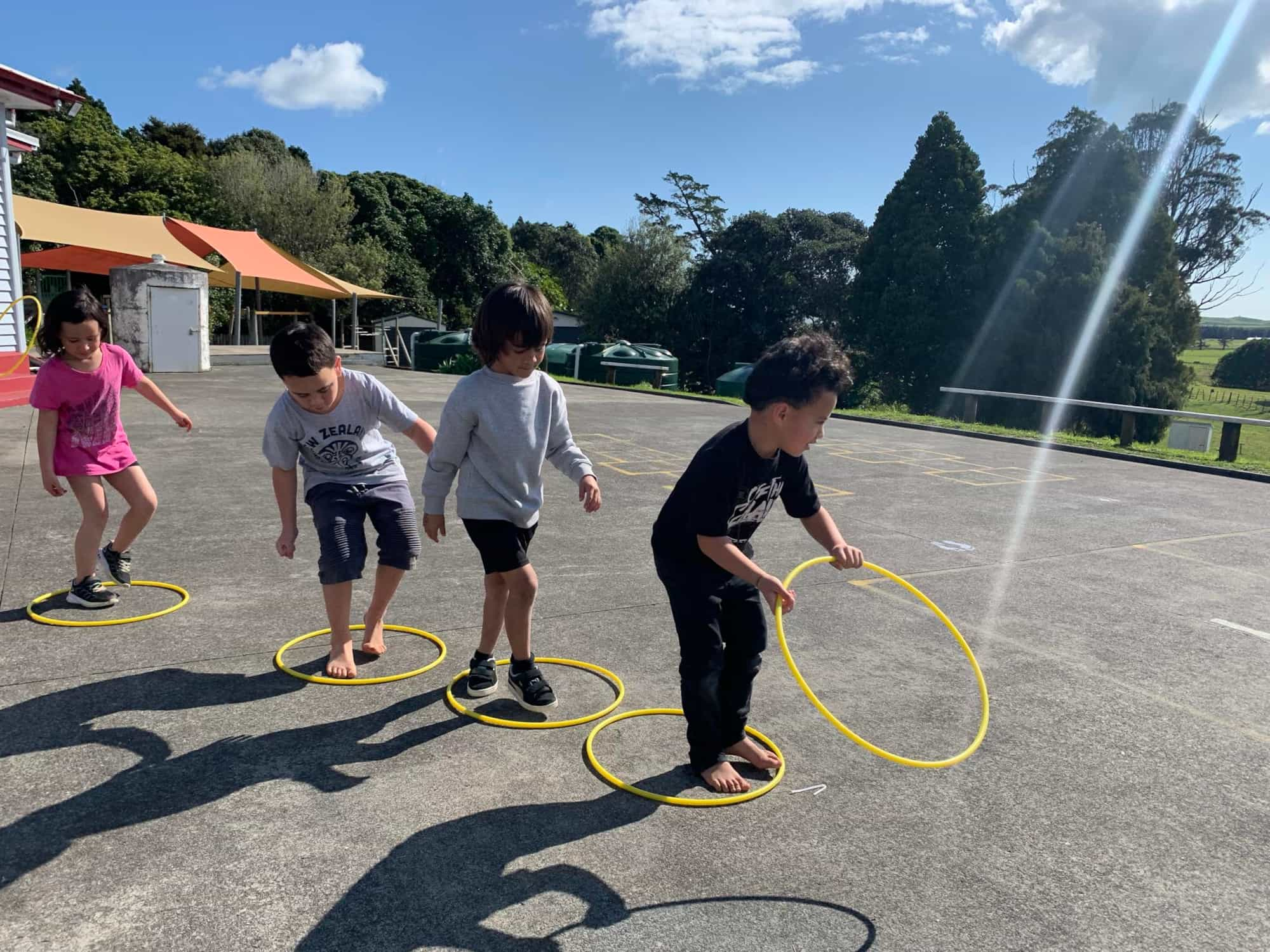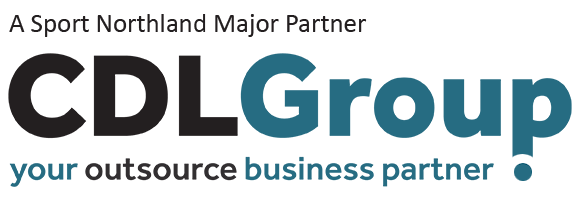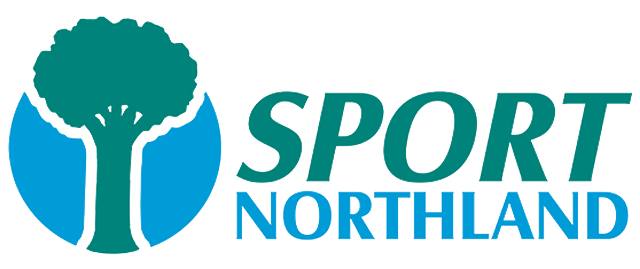


Strong Focus on Movement Supports All Learning Areas

The junior class at Pukepoto School, led by Debra Vela, are an enthusiastic class of learners.
Through observing her class, Deb recognised that her students were craving movement, as they were not settled when sitting and listening. She also wanted to work with them on taking turns and problem solving. Deb has taken a proactive approach through open-ended thinking, and with dedication for her class to use a student led approach, to find solutions that will enhance her student’s day by bringing fun and engaging opportunities back to life in and out of their classroom. Working with Ebony Paaka from Healthy Active Learning, Sport Northland, the class introduced a ‘Movement Board’ to cater to the needs of her students and fuel their interests, needs and motivation to learning.
What started with a need to refocus and settle a class lead to a fundamental skills movement board, which has its place up on the wall alongside reading, writing and maths. This creation has excited both students and staff, engaging and uniting them in their day by opening up the possibility of relevant, meaningful learning by integrating physical activity into the daily learning routine.

In a time when we are strictly told how much time should be allocated to certain things and where technology and digital tools can easily dominate the classroom, Pukepoto School is proving that sometimes the most effective learning strategies are those that incorporate the simplest of human elements, like movement.
The Movement Board is a tool that encourages and incorporates fundamental movement aiding development alongside their regular reading, writing and math plans. This was something the students were craving.
As a junior class of ages of 5-7, these children are still in the developmental stage where they need physical activity to inhibit important reflexes and brain development. Ellie Davidson, Senior Regional Play Consultant at Sport New Zealand says “This innovative approach is not just about making learning more engaging, it’s also enhancing cognitive function, coordination, improving focus, and fostering a more inclusive classroom environment. It caters to the needs in the classroom while minimising behaviour management.
The idea of the Movement Board came after Debra observed how often the students struggled to sit still for longer periods of time during lessons, as well as their need to interact with each other, practise social skills like taking turns, and speaking and listening.
Debra explains “It became clear to me that the more students sat, the more restless and distracted they became, we would use the playground to create obstacle courses, and the students loved that”.

After consulting with Ebony we started thinking, how can we channel that energy into something more productive while still maintaining the integrity of the lesson? Reaching out to Ebony helped me to realise that the children craved movement in their day and to understand them more developmentally. I knew they needed time to experience movement and encouragement to feel success in their day. And a strict timetable can sometimes make it hard to fit everything in to a school day or learning week, finding the time for movement can often feel restricted. However, the Movement Board has demonstrated that incorporating such activities can lead to accelerating success, as the students become more focused and developmentally ready to learn. They know they are going to get movement throughout their day, so having to sit still or complete tasks feels more manageable to them now. The Movement Board was created and is positioned alongside the Reading, Writing and Maths timetable in our classroom, the board includes a variety of simple exercises that students can do between lessons or as short or long breaks, depending on time, in or out of the classroom”.

The activities have been codesigned and personalised with the class from the Movewell resource and other creative sources online to suit their needs. They can be used as a tool for classroom management, wellbeing and social emotional regulation and growth. The activities are strategically chosen to help students refocus and refresh their minds as well as work on things like motor development, turn taking, problem solving and building relationships.
Debra, with the help of teacher aide Kayleigh, integrated the Movement Board with ease into the daily structure. With resources prepared and kept at hand in a classroom basket. Students can be encouraged to choose an activity off the board. These short bursts of movements help increase blood flow, boost energy and provide the movement essential to the developmental age of the junior class.

Kayleigh says, “The effects have been impressive, with improved concentration and calmer students. The teacher and I have noticed that students are more focused and better able to manage themselves after incorporating movement into their routines. The activities are manageable and easy to do throughout the day, making movement whether spontaneous or planned, a regular part of their school day, it’s awesome and more connecting for the students. We have really noticed a difference in how they are getting along with each other and in them being able to concentrate for longer periods of time”.
Tracey King, Pukepoto School Principal also shares similar observations going onto say “we have definitely seen a positive shift”. The Movement Board has led to further exploration of movement opportunities to enhance the development of fundamental movement skills and with thanks to Tū Manawa funding, the school’s initiative has now led to taking the class to gymnastics once a week. As well as the purchase of additional school resources to support this kaupapa and fundamental motor skill development. This reflects the school’s dedication to nurturing the whole child in education. “It’s clear that when their physical needs are met, their mental capacity to absorb and retain information increases, along with their ability to interact and understand each other, building important lifelong social skills,” says Tracey King.
Research into the relationship between physical activity and cognitive function was further enhanced through the support of Senior Regional Play Consultant, Ellie Davidson, from Sport New Zealand, who supports the provision of quality play opportunities within schools throughout New Zealand. “Movement is critical for brain development, especially in young children,” says Ellie. “Incorporating physical activity into the school day can improve memory, concentration, and get the children ready for learning.”
For students in the junior class at Pukepoto School, the Movement Board has created space where both their minds and bodies can thrive. Student feedback has sounded like;
“I feel like I can learn better”.
“I like playing on the park at school, it helps me to learn about myself”.
“I like playing, I learn about pluses and maths”.
“It's fun playing at school, it makes me feel good”.
“It helps me do my reading, I like reading eggs (a Learn to Read programme) and playing ipads”.
“I like it in the pool, I listen in the pool”.
“I like playing with my friends, the handball game is fun”.
“I feel nice and calm after playing”.
“I like learning how to climb stuff”.
“Doing fun stuff helps me to learn how to read”.
“I love going to school on our gymnastics day!”
The Movement Board gives students a positive break, an outlet for growing energy and a sense of accomplishment when they achieve a new skill, like balancing the bean bag on their shoulder or knee or taking turns passing a ball with each other. It is developing their whole sense of self and giving them confidence in who they are,” says Debra. “It’s all about setting the whole child up for success across all areas of learning.”
“The Movement Board and gymnastics have been a game changer for our son”, says parent Nicole Joesph. “He’s always been a kid who struggles to sit still, he’s still young. He looks forward to going to school and is more engaged with his lessons, feeling more capable. It’s made a huge difference. Our son actually comes home and is actively talking about his day. Telling us about it when he comes home from school with excitement! Mat time was always a struggle for him, sitting down - his behaviour has been changing, and he’s been having really good days of actually doing reading and writing in his day. He’s up and ready for school, motivated, especially on the days he has gymnastics. We’ve seen and heard really good feedback from his teacher too and it’s been an encouraging factor for us and him to go to school. He’s really excited and a lot more motivated because he knows he’s going to do something that he really enjoys”.

For now, the Movement Board remains a favourite feature of the classroom, and its impact in the students' enthusiasm is undeniable. Coupled with the weekly visit to Kaitaia Gymnastics and weaving this skill alongside movement in the pool with the schools’ swimming programme, these students are being offered opportunities to experience success and a love of learning across a range of curriculum areas.
In a world where education often increasingly focuses on academic performance, Pukepoto School is leading the way in demonstrating that movement and joy are essential to a child’s success.
Article written by Ebony Paaka, Healthy Active Learning School Connector

SPORT NORTHLAND
CDL Group Northland Sports House
97 Western Hills Drive, Kensington,
Whangārei 0112
info@sportnorth.co.nz
CDL Group Northland Sports House - 09 437 9600
McKay Stadium / Kensington Fitness - 09 437 4404



